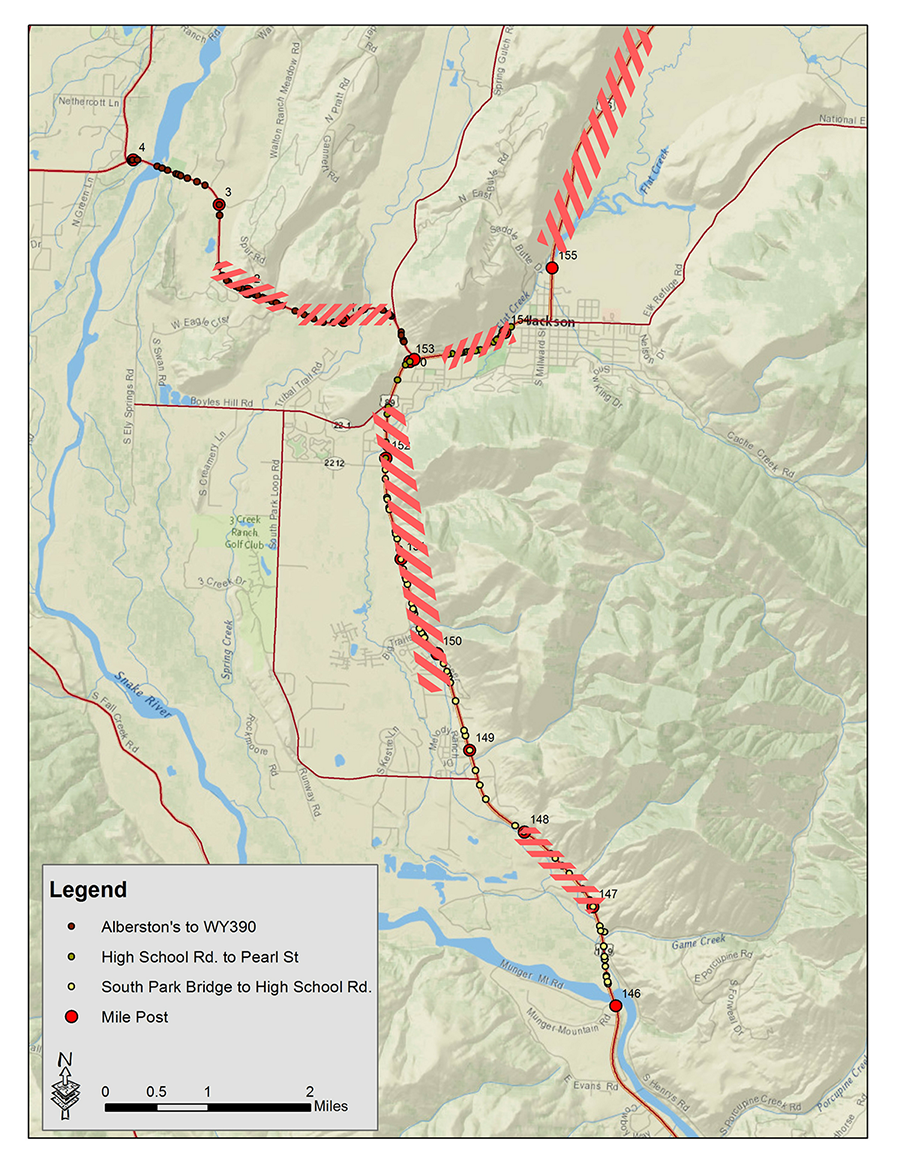
The Teton County Sheriff’s Office contributed two more variable message signs to a stretch of S HWY 89 as area organizations enacted emergency options to address a challenging winter for wildlife.
We have all seen that this year’s snowpack is making things difficult on wildlife. Mule deer in particular are spending more time in the town and on the roads – wherever they can find easier movement and potential forage. As they join us on the valley floor and move around where we do, the potential for conflict of many kinds increases. An obvious problem arises on our roadways, as high snowbanks both limit driver visibility and make navigation challenging for wildlife. Area organizations and agencies continue to discuss options to address the issue, some having been put in place immediately as short -and long-term strategies to reduce wildlife vehicle collisions are integrated. Here’s an update on the quick-response efforts:
Jackson Hole News & Guide article by Mike Koshmrl (Thursday, January 26)

A small herd of bighorn sheep is frequenting the stretch of N HWY 89 just north of the Dairy Queen near the town limits. Please give them ample space and time to move. Unlike deer and elk, these sheep will obstinately remain on the road.
While a county-wide master plan is in process, an array of short-term mitigation measures have been and will continue to be considered. We are grateful that a good deal of data exists on the relative effectiveness of various measures, which we use to make decisions while also recognizing the constraints of time, resources and feasibility. The planned crossings on South HWY 89 (construction set to begin next spring) will separate animals from the roadway, which data suggests is the most effective way to reduce wildlife-vehicle collisions at scale. According to most research, underpasses and overpasses are 80-90% effective at reducing WVCs, while seasonal wildlife alert signage (i.e. variable mobile message signs) is estimated in the 20-25% effective range, making it an effective emergency measure and complimentary piece within a holistic WVC reduction effort. The master plan will likely include a number of mitigation recommendations to include structures, signs and speed limit adjustments to apply the most effective site-specific solutions across the valley.
What can you do now?
- Be alert and drive for the conditions. Most accidents happen at times of low visibility – dawn, dusk, nighttime or in bad weather.
- Watch for electronic warning signs. These signs are put in places where we know animals are or have recently been crossing the road frequently. They’re not just generic warnings – when you see these signs, watch carefully for wildlife.
- When you see wildlife near roadways – slow down immediately. If you see one animal cross the road, it is very likely more are close behind. Animals near the road are not waiting for us to pass by – expect them to do something unexpected, like dash in front of your car.
- In winter, wildlife often use roads to move about – it’s easier than walking through deep snow. But, sometimes they get onto a road and can’t find a quick place to get off. Give them a brake. Be patient and give them time to find a place to get off the road.
- To protect yourself and your passengers, experts advise that you should not swerve off the road to avoid hitting an animal.
- Familiarize yourself with the wildlife-vehicle collision hotspots (located here) and be even more mindful when driving there. Hint: The flashing fixed radar speed limit signs and digital message boards are located in some of these hotspots.
- Get involved with Safe Wildlife Crossings for Jackson Hole to learn about what we can do to reduce wildlife-vehicle collisions as a community.
- Contact your elected officials to let them know that reducing wildlife-vehicle collisions is a high priority.
- If you see areas where snowbanks are trapping wildlife on roadways or impeding movement unusually, please don’t hesitate to call us at 307-739-0968. We work with local partners to address these issues if possible.
Additionally, if you are a Nature Mapper, record your observations of wildlife around neighborhoods and roadways. Please use the comments fields to share the activity you observe. The more information we collect about locations and behaviors during winter (all seasons, actually), the better we understand as a community how we are interacting with wildlife, with the goal of living compatibly alongside our wild neighbors.
Be especially alert in the areas highlighted on this map!

